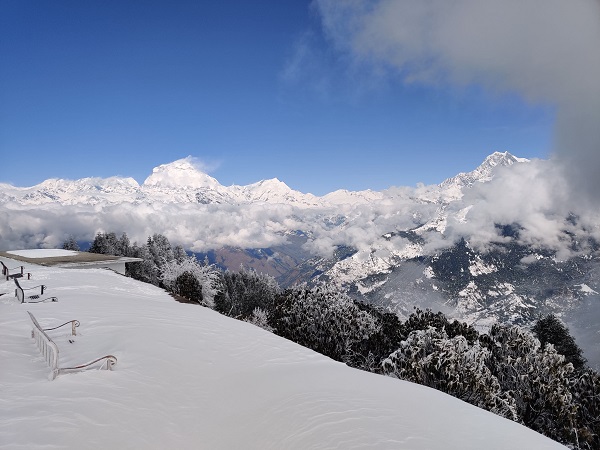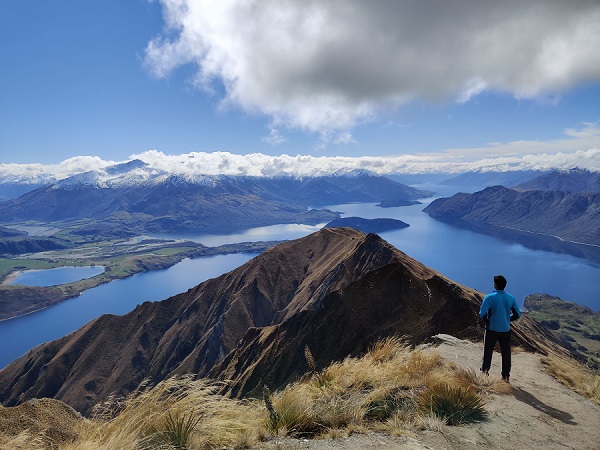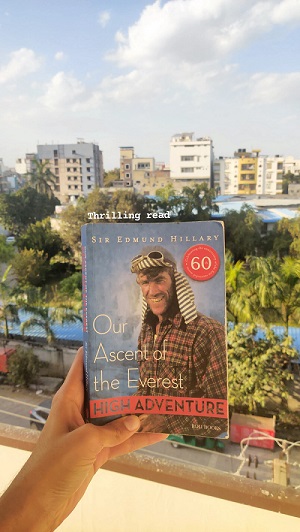“You don’t have to be a hero to accomplish great things—to compete. You can just be an ordinary chap, sufficiently motivated to reach challenging goals.”
Edmund Hillary, High Adventure
It’s a wonderful feeling being in the mountains. Snow-capped peaks in each direction, the lower part of the mountains covered in forests, fresh chilly air, and tiny mountain villages.
I spent my lockdowns watching videos of hikers and mountaineers to the utter annoyance of my mom who was worried I might end up on one of these and not return home.
I have not hiked much. A few one-day hikes in Australia and New Zealand (Roys Peak is a must if you ever visit) and one three-day hike in Nepal (Poon Hill Trek), but they were enough for me to fall in love with mountains and read about treks in the mighty Himalayas.

Poon Hill, Nepal 
Roys Peak, NZ
I had read Into Thin Air last year, which is a terrific account of the Everest disaster of 1996. It made me wonder about the first ascent of the summit, so before flying to Nepal last year in December, I picked up the book High Adventure to read on my hike.
Needless to say, I overestimated my capabilities to read it then. All I wanted to do after a full day of hiking was sit by the fireplace, have a hot meal, and go to bed early. Maybe chat with fellow hikers or read something else on my kindle. Reading about cold mountains while being on one was not lucrative.
We had not expected snowfall on the route and found ourselves waddling through knee-deep snow on the second day of our hike from Ulleri to Ghorepani.
Still high on the mountain experience, I finished this book back in January in the comforts of my home.
It’s a very straightforward account of Hillary’s experience summiting the mountain; how he got into climbing, his early climbs, and a chance to join the Everest expedition in 1951, the challenges they faced, nearby explorations in 1952, and finally reaching the summit in 1953.

A few things that stood out for me:
Do things you like more often
It could be climbing, cycling, painting, baking, acting – just do it for the sake of it.
Edmund Hillary began climbing in New Zealand’s Southern Alps while on a high school trip with a friend. He worked with his dad as a beekeeper during the summers and climbed mountains during the winters. After military service in World War II, he joined a party to the central Himalayas in 1951 and later joined a mountaineering team planning to climb Mount Everest.
This wouldn’t be possible if he had not pursued his passion for climbing mountains. It gave him the determination and courage to reach the summit but also the opportunity in the first place to be able to attempt that.
These days, everyone is looking to make a quick buck through their side hustles. Internet is filled with tips on making money through things we like to do. There’s nothing wrong with earning money or the desire to earn more, but I think we all need an activity we do just for the sake of it.
Just because we enjoy it and find ourselves in a flow state without any pressure to get something back. And this might even open up more opportunities in the long term.
Nothing comes easy
Another thing that baffles me is the number of challenges they faced in climbing mountains.
To be fair, the climbers were probably fine with them because they didn’t know better.
They had the best equipment available in those times but reading about how they persevered through it all is quite humbling.
Some examples of things we can’t imagine doing or have the patience for now:
- Traveling was a pain – about 1-2 months on the ship from India to NZ
- 2-3 dozen porters for just 2 people while moving through mountains
- Transit by truck once took 9 hours for 30 miles in Northern India
- Crossing Arun River by foot – neck-deep water flowing at high speed with lots of luggage
- On the night of the summit, they are trying to sleep, but have to choose between a comfortable sleep by taking cold shoes off vs stiff boots in the morning. They choose a semi-comfortable night but then have to thaw the boots in the morning and start the ascent with frozen boots
- Often times it took 30-40 mins to just boil water and make tea in the camps
- The number of times they go up and down the camps and make routes that would be blown away by winds and snowstorms was baffling
Teamwork
When we read about Hillary and Tenzing reaching the summit, we forget the many others who were part of the climbing mission.
The expedition totaled over 400 people, including 362 porters, twenty Sherpa guides, and 4500 kgs of baggage. Imagine that.
Hillary and Tenzing were supposed to be the second group to go for the summit push. Three others went before them but had to return due to a shortage of oxygen and strength.
It’s a great book but to be fair, it can be a bit dry at times. There are many technical details about mountaineering, the tools he used, and the type of ice/snow paths they were crossing.
While I love mountains, I’m not well aware of the technical stuff and did not enjoy a few parts of the book.
If you’re like me, try Into Thin Air by Jon Krakauer or The Snow Leopard by Peter Matthiessen.
Find out what excites you and start reading about it.


